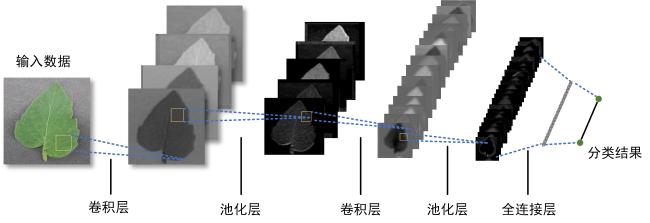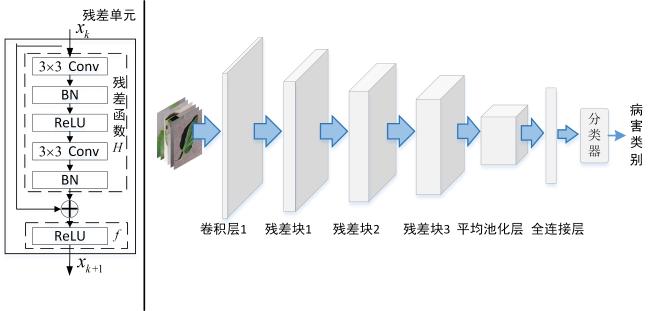1 引言
2 基于深度残差网络的病害图像识别方法
2.1 深度残差网络结构
表1 网络参数Table 1 Network parameters |
| 层序号 | 输出特征图大小 | 卷积核状态 |
|---|---|---|
| 卷积层1 | ||
| 残差块1 | ||
| 残差块2 | ||
| 残差块3 | ||
| 平均池化层 |
2.2 基于贝叶斯理论的超参数优化
3 试验结果及分析
表2 试验数据库Table 2 Experimental database |
| 叶片类型 | 训练数量(张) | 验证数量(张) | 总数(张) |
|---|---|---|---|
| 健康叶片 | 534 | 159 | 693 |
| 白粉病叶片 | 603 | 184 | 787 |
| 早疫病叶片 | 316 | 99 | 415 |
| 晚疫病叶片 | 569 | 190 | 759 |
| 叶霉病叶片 | 259 | 94 | 353 |
| 总数(张) | 2281 | 726 | 3007 |
表3 不同识别模型对比Table 3 Comparison of different recognition models |
| 识别 模型 | 单个病害识别准确率(%) | 平均准确率(%) | ||||
|---|---|---|---|---|---|---|
| 叶片白粉 | 叶片早疫 | 叶片晚疫 | 叶片叶霉 | 健康叶片 | ||
| SVM | 83.7 | 52.5 | 68.9 | 66.0 | 92.5 | 72.7 |
| BP神经网络 | 78.8 | 51.5 | 71.1 | 60.6 | 93.7 | 74.0 |
| DCNN | 95.0 | 99.5 | 81.8 | 94.7 | 94.7 | 94.2 |
| 本研究模型 | 96.7 | 98.9 | 96.0 | 95.8 | 95.7 | 96.8 |














